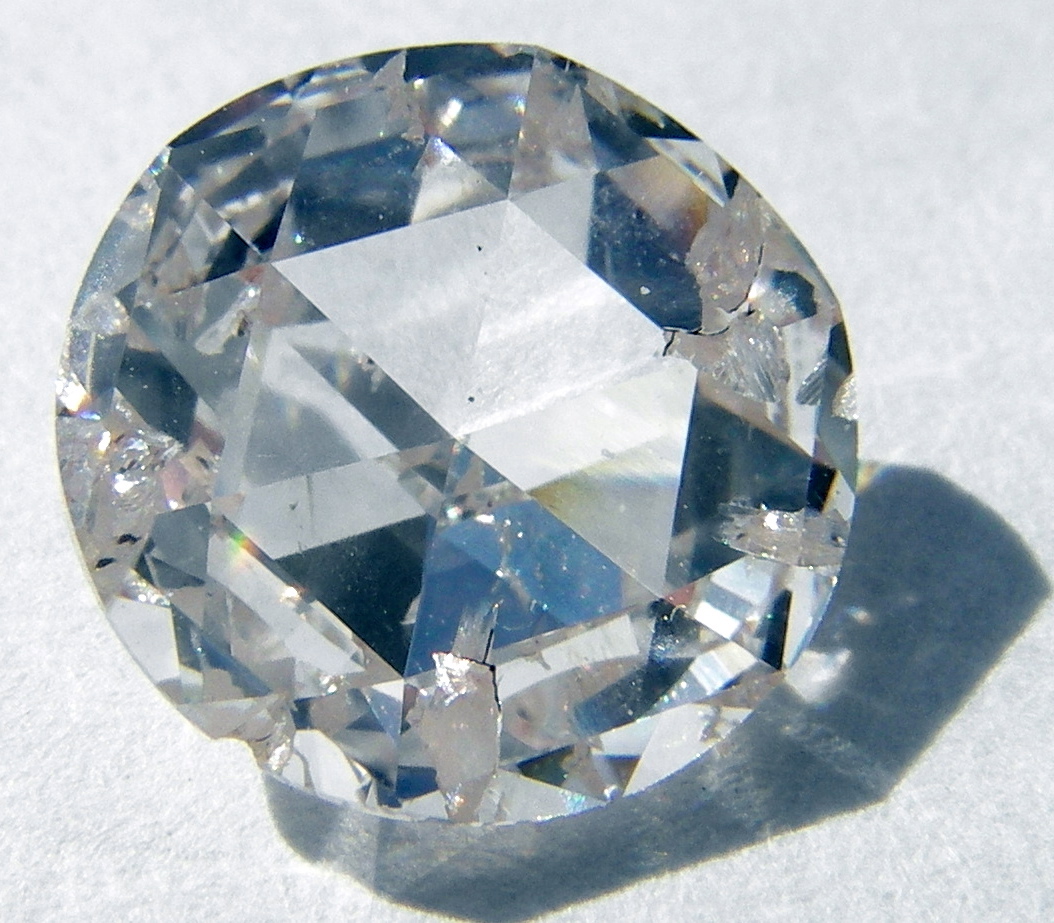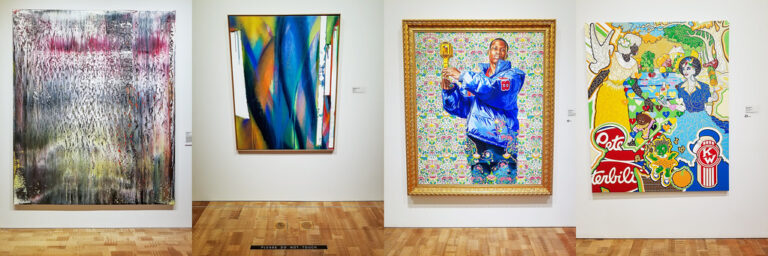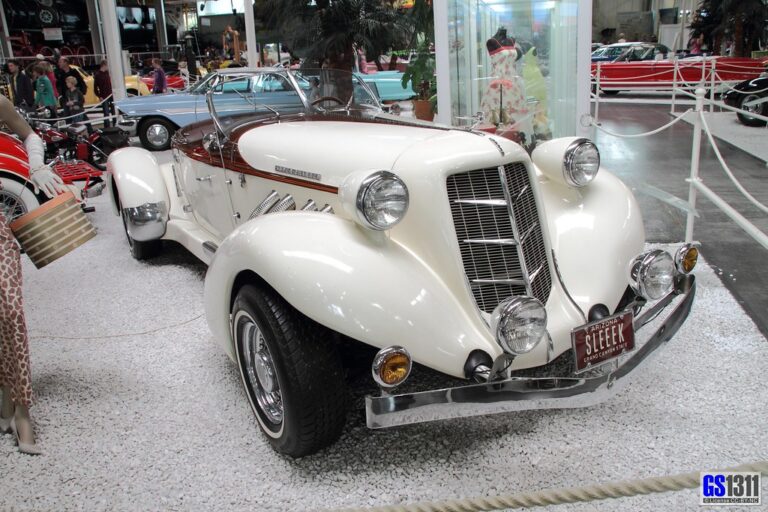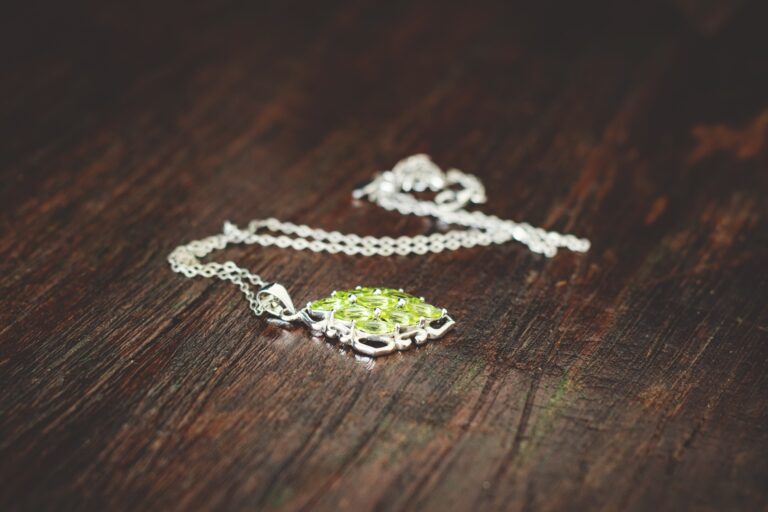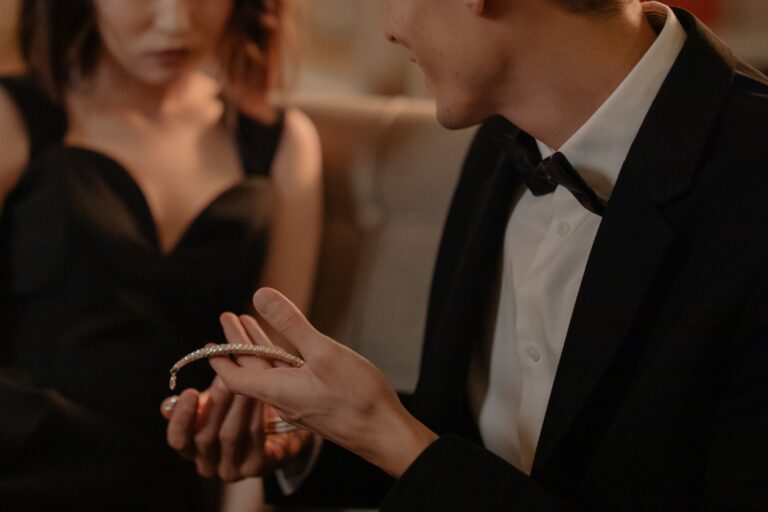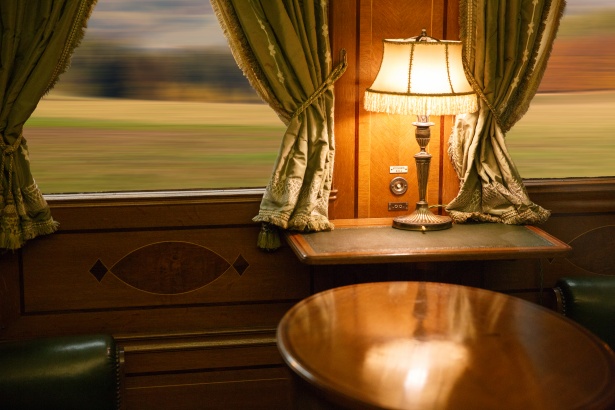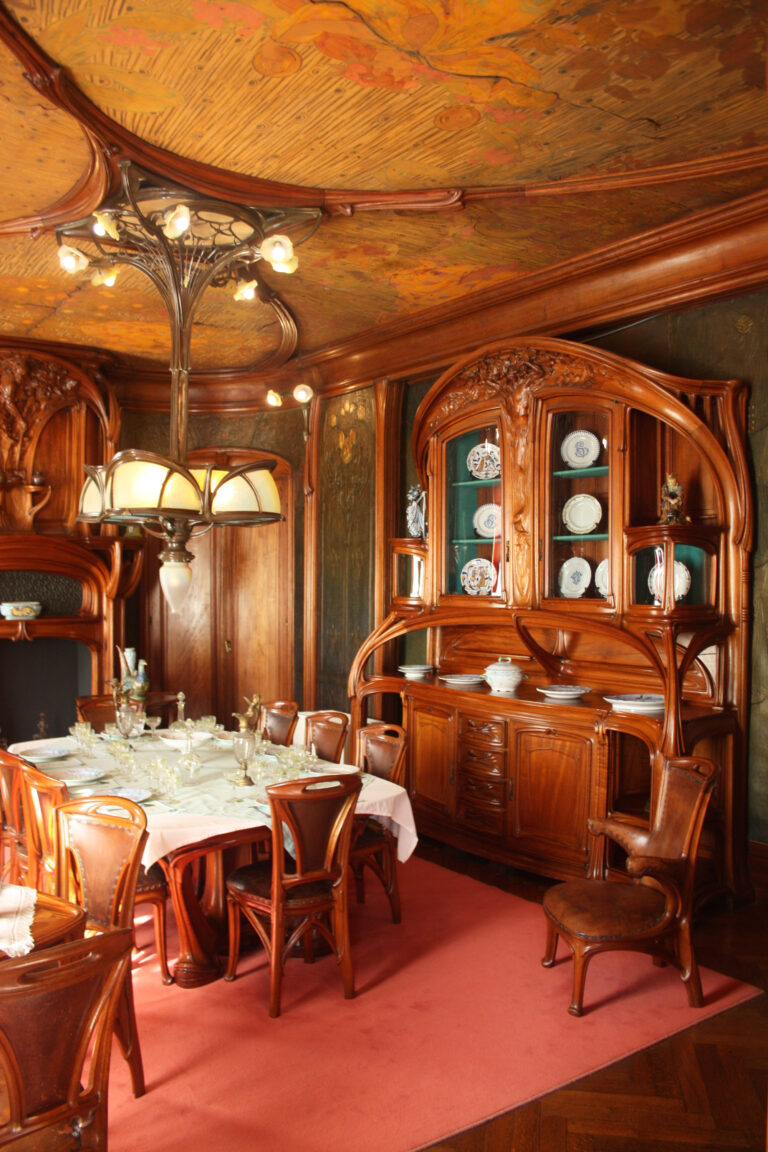How Can You Tell If a Diamond Is Real
Diamonds: these small, sparkling wonders have captured hearts for centuries with their mesmerizing beauty and exceptional value. Whether you’re planning to purchase a diamond or simply curious about the authenticity of a stone, the question remains the same: How can you tell if a diamond is real?
Amidst the shimmering array of imitations and synthetics flooding the market, distinguishing genuine diamonds from clever replicas has become paramount. This article cuts through the fog of misconceptions, presenting you with practical tips to identify the authenticity of a diamond, minus the fuss and fluff.
Join us as we embark on a journey through the world of diamonds, unraveling the secrets behind their spellbinding allure and learning foolproof methods to spot the genuine article from a mile away. So, without further ado, let’s uncover the truth about diamonds and equip ourselves with the knowledge to separate the real gems from the just the pretty rocks.
Table of Contents
- Determining the Authenticity of a Diamond: Uncovering the Secrets of Real Diamonds
- Understanding Diamond Composition: The Key to Identifying Genuine Stones
- Unmasking Fake Diamonds: Common Characteristics of Counterfeit Gems
- The Ultimate Diamond Test: Tried-and-Tested Methods to Confirm Authenticity
- Professional Expertise vs. DIY Diamond Testing: Which Approach Should You Take?
- Tips and Tricks for Spotting a Real Diamond: Expert Recommendations for Consumers
- FAQs
- Closing Remarks
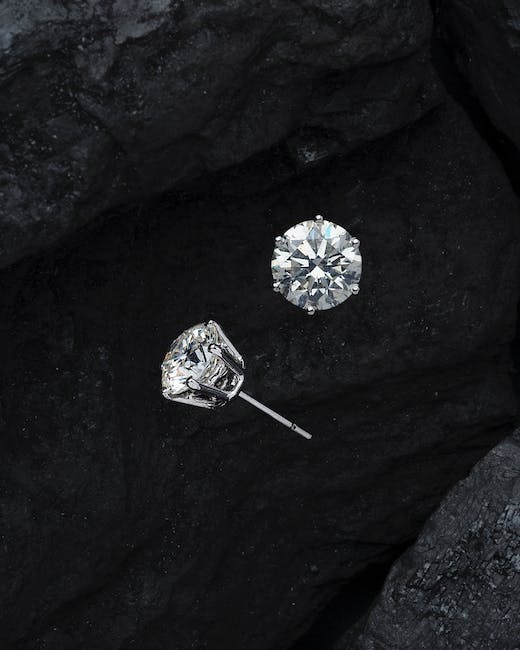
Determining the Authenticity of a Diamond: Uncovering the Secrets of Real Diamonds
In the world of diamonds, determining the authenticity of these precious stones is of utmost importance. There are a multitude of factors that play a significant role in uncovering the secrets of real diamonds. By understanding these factors, you can become an informed consumer and ensure that your diamond purchase is genuine and valuable.
One crucial aspect when assessing the authenticity of a diamond is its certification. Reputable diamond grading laboratories, such as the Gemological Institute of America (GIA), provide certificates that guarantee the diamond’s quality and characteristics. These certificates serve as concrete evidence of a diamond’s authenticity, offering details about its cut, carat weight, color, and clarity. When purchasing a diamond, always insist on obtaining a certificate from a trusted and recognized source.
Another key factor to consider is the diamond’s clarity. Real diamonds are formed deep within the Earth’s crust under immense pressure, resulting in unique internal characteristics called inclusions and external blemishes. These imperfections are what make each diamond distinctive. To determine a diamond’s clarity, gemologists examine it under magnification and assign it a clarity grade. Diamonds with fewer inclusions are rarer and more valuable. When buying a diamond, make sure to inspect it closely or consult with a professional to identify any visible imperfections that may affect its authenticity.
In summary, it is crucial to be well-informed about the authenticity of a diamond before making a purchase. By verifying its certification and understanding the significance of clarity, you can confidently differentiate between real diamonds and imitations. Remember, a genuine diamond holds timeless beauty and tremendous value, making it a symbol of true luxury and elegance.
Understanding Diamond Composition: The Key to Identifying Genuine Stones
Understanding the composition of diamonds is essential when it comes to differentiating between genuine stones and imitations. It is the key that unlocks the mystery behind these precious gemstones. By examining their composition, you can truly appreciate the uniqueness and value of authentic diamonds.
So, what exactly makes up a diamond? Let’s take a closer look at its composition:
– Carbon atoms: Diamonds are made entirely of carbon atoms that are tightly bonded together in a crystal lattice structure. It is this structure that gives diamonds their incredible strength and sparkle.
– Impurities: Although diamonds are primarily made of pure carbon, they often contain trace amounts of other elements, known as impurities. These impurities can affect the color and overall appearance of the diamond.
– Crystal structure: Diamonds have a distinct crystal structure called a cubic crystal system. This structure consists of repeated patterns of carbon atoms, resulting in a symmetrical and geometrically intricate formation.
– Natural formations: Diamonds are formed deep within the Earth’s mantle, where intense heat and pressure transform carbon into these remarkable gemstones.
Understanding the composition of diamonds allows gemologists and consumers alike to verify the authenticity and quality of the stones. When purchasing a diamond, it is important to rely on trusted experts who can examine the composition and provide certification to ensure that you are investing in a genuine and valuable gemstone. So, next time you gaze at a diamond, remember that its composition holds the key to its true identity.
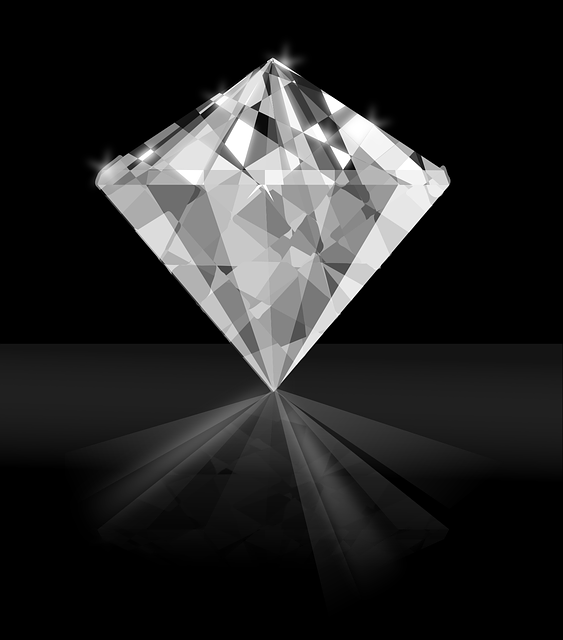
Unmasking Fake Diamonds: Common Characteristics of Counterfeit Gems
When it comes to diamonds, authenticity matters. Unfortunately, there are counterfeit gems out there that may try to deceive buyers. To help you avoid falling prey to these imitations, we have compiled a list of common characteristics to look out for:
- Lack of Brilliance: Counterfeit diamonds often lack the stunning brilliance that genuine diamonds possess. They may appear dull or cloudy, lacking the captivating sparkle that draws you in.
- Unrealistic Color: Natural diamonds come in a variety of colors, but counterfeit ones may sport unrealistic hues. If a diamond presents an oddly colored tint, such as vivid yellows or blues, it’s a red flag.
- Flawless Surface: Genuine diamonds typically have internal flaws or external blemishes. Counterfeit gems are more likely to appear perfectly flawless, which is highly uncommon in real diamonds.
Remember, being vigilant and knowing the markers of counterfeit diamonds can save you from wasting your hard-earned money on fake gems. Keep an eye out for these telltale signs when considering any diamond purchase to ensure you end up with the real deal.
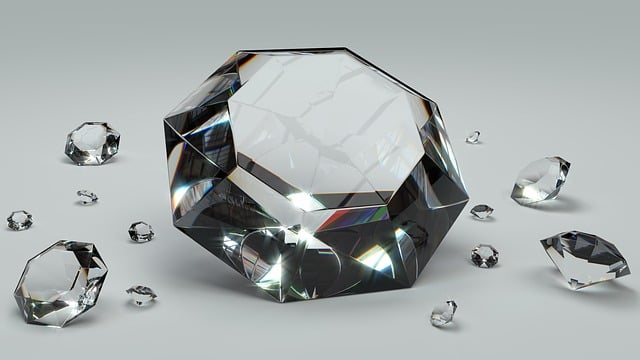
The Ultimate Diamond Test: Tried-and-Tested Methods to Confirm Authenticity
- Professional Certification: Always start by checking if the diamond comes with a reputable certification from a trusted gemological laboratory, such as GIA or AGS. These certifications are conducted by experts who thoroughly examine the diamond using advanced equipment and grading standards, guaranteeing its authenticity.
- Magnification: Examine the diamond under a jeweler’s loupe or a microscope with at least 10x magnification. Look for any imperfections, such as inclusions and blemishes, which are typical characteristics of natural diamonds. If the diamond appears flawless under magnification, it might be a synthetic or lab-grown diamond.
- Thermal Conductivity: A diamond conducts heat more efficiently than any other gemstone. One popular test is to fog the diamond with your breath and observe how quickly it clears. If the fog dissipates almost instantaneously, it indicates that the diamond may be real. However, keep in mind that this method is not foolproof and should be combined with other tests for accurate results.
By employing these tried-and-tested methods, you can confidently confirm the authenticity of a diamond before making a substantial investment. Remember to always consult with professionals and reputable sources to ensure your diamonds are genuine. Don’t risk getting duped by fake diamonds when you can rely on these reliable testing methods.
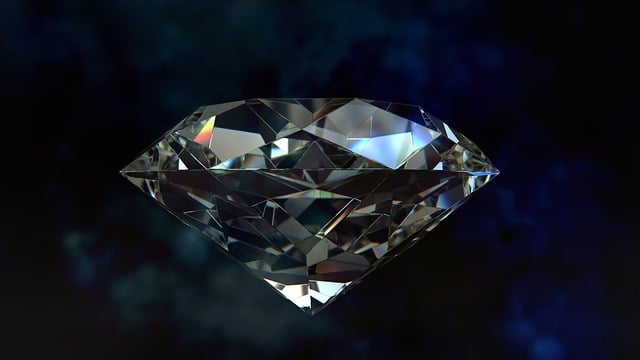
Professional Expertise vs. DIY Diamond Testing: Which Approach Should You Take?
- Professional Expertise: By seeking assistance from certified gemologists or diamond appraisers, you tap into their knowledge and industry experience. These experts employ advanced tools and examination techniques to accurately determine the characteristics, grade, and value of a diamond. Their extensive training helps identify potential red flags and detect synthetic or treated stones effectively.
- DIY Diamond Testing: If you choose the do-it-yourself route, there are several basic tests you can perform to evaluate your diamond’s authenticity. These tests include observing diamond behavior under ultraviolet light, using a diamond tester to gauge electrical conductivity, assessing the stone’s clarity with a loupe, and examining its reaction to heat. DIY testing methods allow you to conduct initial assessments at home and can provide a general idea, although they may not offer the same precision as professional evaluations.
Ultimately, the approach you take depends on your individual requirements, budget, and level of expertise. While professional assessments guarantee accuracy and comprehensive evaluations, they come at a cost. DIY testing, on the other hand, offers convenience and affordability but might not provide the same level of certainty. Consider the significance of the diamond, your comfort with conducting tests, and the importance of a precise evaluation before making your decision.
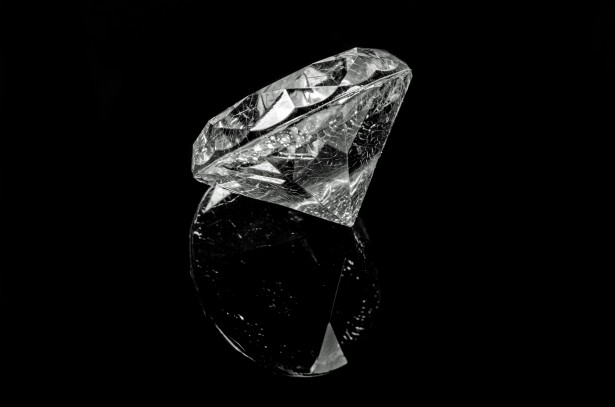
Tips and Tricks for Spotting a Real Diamond: Expert Recommendations for Consumers
When it comes to purchasing a diamond, it’s crucial to ensure you’re getting the real deal. Don’t worry, we’ve got you covered with some expert tips and tricks to help you spot a genuine diamond. Let’s dive right in!
1. Examine the stone’s clarity: A real diamond will typically have some imperfections, known as inclusions, as they are formed under extreme pressure. You can use a jeweler’s loupe to closely inspect the diamond for any visible flaws. Keep in mind that even the most flawless diamonds may have tiny inclusions that are only visible at magnification, so don’t be alarmed.
2. Conduct a fog test: Hold the diamond in front of your mouth and gently fog it up with your breath. If the fog dissipates quickly, it’s likely a genuine diamond. Fake diamonds will retain the fog for a longer time.
3. Make use of the newspaper test: Place the diamond upside down on a piece of newspaper. If you can read the text through the stone, it’s probably not a real diamond. A genuine diamond refracts light in a way that the newspaper text will be illegible.
4. Shine a light on it: A diamond with exceptional brilliance will reflect light extremely well, creating a dazzling appearance. You can shine a light onto the stone to see if it reflects rainbow colors or white light. If the diamond exhibits a rainbow of colors, it’s likely fake.
FAQs
Q: How can you tell if a diamond is real?
To determine if a diamond is real or fake, you can use various methods that can be done at home or with the help of a professional. Here are some common ways to check the authenticity of a diamond:
- Observe the diamond’s sparkle and brilliance: Real diamonds have excellent light reflection and brilliance. They will sparkle and reflect light in various colors, known as “fire.” If the stone lacks sparkle or appears dull, it may not be a genuine diamond.
- Check for fogging: Breathe on the diamond as you would fog a mirror. If the fog quickly dissipates, it is likely a real diamond. Fake diamonds will not disperse the moisture as rapidly.
- Perform the water test: Drop the diamond into a glass of water. Real diamonds have high density, so they will sink to the bottom. On the other hand, fake diamonds or cubic zirconia may float or be suspended in the water.
- Examine for scratches and wear: Diamonds are one of the hardest substances on Earth, so they should not scratch easily. If the stone shows signs of abrasion or scratches, it may not be a real diamond.
- Use a diamond tester: A diamond tester is a handheld device used to test the electrical conductivity of a gemstone. Since diamonds conduct electricity differently from most other gemstones, a diamond tester can help identify real diamonds from imitations.
- Look for imperfections: Most natural diamonds have imperfections or inclusions. If you can see small flaws within the stone under a jeweler’s loupe or microscope, it may indicate that it’s a real diamond.
- Seek a professional evaluation: If you are uncertain about the authenticity of a diamond, it’s best to take it to a reputable jeweler or gemologist for a thorough examination. They can use advanced tools and techniques to accurately determine if it is a real diamond.
Q: Can I use the fog test to check if a diamond is real?
A: Yes, the fog test is a quick and easy way. Breathe on the diamond like you would a mirror. If it gets foggy and takes a while to clear, it’s probably fake. Genuine diamonds disperse heat quickly, so the fog shouldn’t linger.
Q: Is the newspaper test effective?
A: The newspaper test can be helpful. Place the diamond flat on a newspaper with some text. If the diamond refracts and causes distortion, it’s probably real. fake diamonds tend to let you read the text clearly.
Q: Does the water test work?
A: Yes, you can give the water test a shot. Fill a glass halfway with water and gently drop the diamond in. A genuine diamond will sink to the bottom straight away, whereas a fake one will either float on the surface or sink slowly due to its higher density.
Q: Can I use the sparkles test?
A: Absolutely! Examine the diamond under a bright light or in direct sunlight. If it sparkles brightly, giving off colorful reflections, it’s likely real. Fake diamonds usually lack brilliance and don’t shimmer as beautifully.
Q: Is the transparency test a reliable method?
A: It can be. Hold the diamond over a piece of paper with some text. If you can clearly see the text through the diamond, it’s probably fake. Genuine diamonds have exceptional transparency, so the text will be difficult to read.
Q: Are there any DIY tests I can try?
A: Yes, there are some DIY tests that might help. You can use a diamond tester or a UV light to examine the diamond further. Additionally, inspecting the diamond under a loupe or magnifying glass might reveal imperfections that indicate authenticity.
Q: Should I have my diamond professionally appraised?
A: If you are still unsure after conducting your own tests, it’s wise to seek professional help. A certified gemologist or jeweler can examine your diamond using precise equipment and techniques to determine its authenticity accurately.
Q: Can fake diamonds be valuable too?
A: While fake diamonds, like cubic zirconia or moissanite, may resemble real ones, they usually don’t hold significant monetary value compared to genuine diamonds. However, they can serve as stunning alternatives at a fraction of the cost.
Q: Where should I buy diamonds to avoid getting fooled?
A: To minimize the chances of purchasing a fake diamond, it’s best to buy from reputable sources like well-established jewelers or certified online dealers. Ensure they provide detailed information and proper certifications for the diamonds they sell.
Insights and Conclusions
To sum it up, determining whether a diamond is real or fake doesn’t have to be a daunting task. By now, you should have a good grasp on some reliable methods to test the authenticity of a diamond. Remember, it’s essential to look out for signs like sparkle, transparency, weight, and certifications when purchasing a diamond. Taking the time to verify its legitimacy will not only save you from potential disappointment but also ensure you’re getting your money’s worth. So next time you come across a diamond, trust your instincts and use these handy techniques to separate the real bling from the imposters. Happy diamond hunting!

